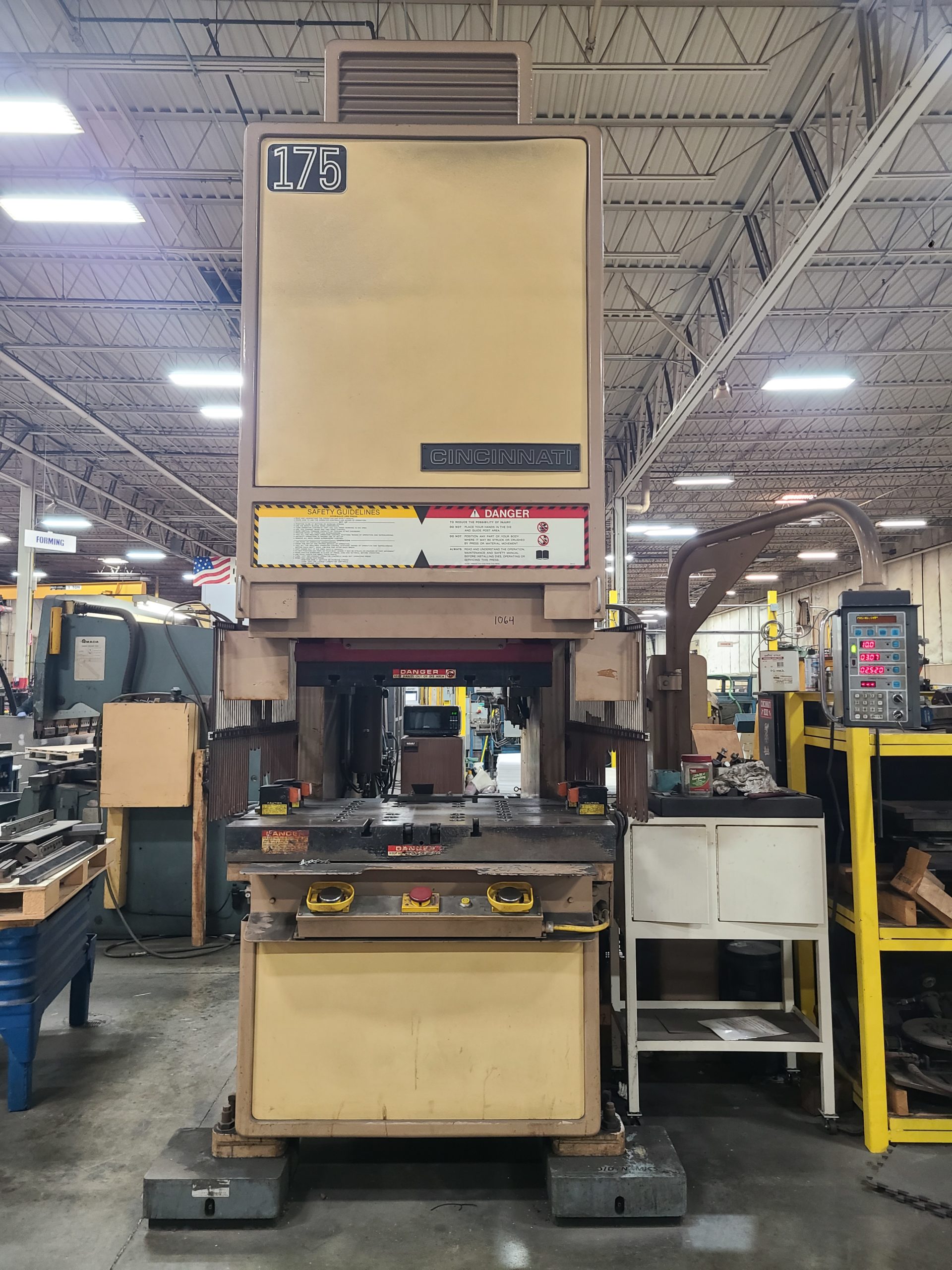Metal stamping is a process that takes flat sheets of steel and uses tooling to convert the sheet of steel into specifically shaped parts. Metal stamping is a complex process and uses various metal forming techniques such as bending, piercing, blanking, and punching.
Why use the metal stamping process?
There are many positive reasons to use metal stamping over other forms of metal fabrication.
Quality and durability
Metal stamping can reliably produce large quantities of parts at a high standard as well as giving users the ability to create highly durable parts quickly by adding bends and other features during the design phase to add rigidity.
Low cost
After the initial setup phases, such as design and prototyping, the parts can be produced en-masse very quickly and for a low cost when compared to other metal fabrication processes that may require multiple workers and machines.
Fast turnaround times
Due to the sheet being stamped quickly and in most cases by automation, the turnaround time of the part is very quick, allowing large quantities to be made and then moved either to the next in-house step of the production phase or directly to the customer in a timely manner.
The basic stamping process
Design
Before any part is stamped the tooling for the part must be created virtually using CAD/CAM engineering and design software based on the company’s or customers’ needs and input.
The designs of the tooling need to be very precise and ensure that the punches, flanges, and bends maintain a high tolerance dimensionally and have the proper clearance and the highest part quality possible.
CNC machining
After designing the tooling, it will then be created by using CNC machining such as a mill.
Mills such as 3-axis or 5-axis mills have a high level of precision, and when creating the tooling for metal stamping, can keep tolerances within 1/1000th of an inch even when milling hardened tooling steel.
Wire EDM
Wire EDM or (electrical discharge machining) can be used in place or in conjunction with CNC machining to help create the tooling as well. Wire EDM technology uses copper wire, electricity, and de-ionized water to cut through metal at a microscopic level by cutting away the metal microns at a time with a wire that’s no wider than a human hair.
In the right hands, Wire EDM can hold incredibly tight tolerances and is preferred in specific tool-creating situations.
Secondary processes
Heat treating is applied after machining to harden the steel. This hardening allows the tooling to withstand the forces, pressure, and repetitive use, allowing it to last considerably longer when compared to mild steel.
After heat treating, grinding of surfaces might be done if the finished part needs to maintain high surface quality and dimensional accuracy.
Metal stamping techniques
There are multiple techniques or processes that can be used when it comes to stamping a part. These processes can vary depending on the complexity of the part or for design considerations.
Four-slide stamping
In four-slide stamping, the stamping machine uses four tools simultaneously to shape a part. Four-slide stamping has several advantages that make it the preferred choice when creating parts; these advantages are flexibility for future design changes and versatility in the creation of complex parts. Each of the four slides has a different tool attached, allowing for the capability to achieve four bends simultaneously and in quick succession.
Progressive die stamping
Progressive die stamping features multiple stations, each performing a single or unique function in the overall part creation process.
Metal sheets are run off of a coil and are fed into the progressive die stamping press. When feeding through the die stamping press, each station performs a different function such as a punch, bend, or cut.
Each station or step in the process adds to the step before it, with the end result being the finished product.
Due to this staged process which requires multiple steps, some manufacturers may have to repeatedly change the tooling during the process and/or operate multiple presses simultaneously for one part.
In most cases, with progressive stamping, the manufacturer may need to do further machining of the part to get it to full completion.
Progressive stamping is a great stamping process to use for overly complex parts in order to meet fast turnaround times and lowered labor costs. Progressive stamping is also great for mass production parts due to its benefits of having high repeatability.
Read more: What is metal stamping?






